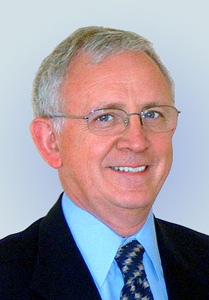
- The business climate continues to be challenging. The bankruptcies of A123 and Global Solar Germany highlight the difficulties of moving new businesses to larger scale, whether or not they are nano-related. Market and financial conditions as well as management missteps are no indicator of a promising or valuable technology. Scaling up to serve large markets in competition with powerful incumbents is a high-risk activity for any business. New energy is still a key growth area for nano applications but the economic problems worldwide are choking off many opportunities at the growth stage.
- Solar thin film, which had been a promising volume market for nanomaterials, has temporarily lost its cost advantage. The loss is temporary because thin film uses significantly less material than crystalline silicon technology and will eventually regain its advantage if economies of scale develop. With silicon module production costs falling below $0.48/watt (Lux Research, 2012) thin film producers have to concentrate on other performance metrics such as better diffuse and low-angle light gathering. In silicon cells, nano silver inks have not gained significant traction as interconnects because advances in printing technology and conventional silver inks provide an adequate cost/performance compromise.
- Venture capital investment for early stage growth companies is still struggling for a clean exit strategy route: IPO or acquisition. Many nano companies are moving towards the business model of medical device companies, whose development sequence goes as follows: a university inventor patents a project that has been supported by grants, the inventor or his/her students form a spinoff, angel or further contract funds are acquired to prove the concept (i.e. lower the investment risk), and then the company hopes to be bought out by a major player. This acquisition route is a strong success indicator in many cases as the major player may already have the infrastructure for sales, service and production. The challenge is that the approach of grant funding and waiting for a suitor means that companies can progress for quite some time without validating a sustainable customer-based growth model to allow for acquisition and enable breaking out of the pure research mode. After many years of dedication, the startup may find itself at a “dead end” after doing great scientific work with no outlet.
- New businesses are still being born, growing, and addressing this dilemma. I was recently at a terrific workshop on the “Lean Launchpad” platform at the Center for Nanoscale Engineering in Albany, NY, hosted by the New York State Energy Research and Development Authority (NYSERDA). I was encouraged to see new companies in battery, solar and thermal energy harvesting participating. The “Lean Launchpad” program under the National Science Foundation (NSF) Innovation Corps initiative is an intensive program that forces a fledgling business to reevaluate its assumptions and confront them with the hard reality of intense customer scrutiny. The pioneering work at centers like the NSF Center for High-Rate Nanomanufacturing and The Center for Hierarchical Nanomanufacturing are in the forefront of developing production-friendly processes to create novel nanostructured systems.
- Developing practical and economic scale-up of more “conventional” nanomaterials continues to be a challenge. At the Nanomaterial Innovation Center, we are exploring freeze drying, plasma, microwave, combustion synthesis, and other techniques to allow high-yield particle synthesis without grain growth. The next challenge is transferring these nanomaterials into a form in which they can be processed using conventional technology such as agglomeration through spray drying, tape casting, screen printing, and thermal transfer printing. Unless the new nano process fits normal manufacturing processes, the barriers to growth are almost insurmountable.
- Hot growth areas from our perspective are electronics and surfaces – from nanostructured shower curtains, to corrosion resistant circuit board coatings, to waterproofing smart phones. Energy transformation and storage such as batteries, thermoelectrics, and capacitors continue to show promise.
- Despite the economic climate, local, regional, and national governments are still finding a way to fund nano solutions for technical issues. An ecosystem of funding, incubators, mentors and processes is “self-assembling” in specific geographic areas to encourage growth world-wide.
- It is frustrating that the definition of “nano” is STILL not universally accepted. Although there is an International Organization for Standardization (ISO) definition, the European Commission altered the definition in their Oct 18 statement: "a natural, incidental or manufactured material containing particles, in an unbound state or as an aggregate or as an agglomerate and where, for 50% or more of the particles in the number size distribution, one or more external dimensions is in the size range 1 nm – 100 nm." Those of us in the business know that what looks like a tighter definition still is open to variability in particle size measurement…TEM? Light scattering? X-ray line broadening? Sedimentation? This discussion will continue…
- Thankfully, the European Commission recognized: “In the light of current knowledge and opinions of the EU Scientific and Advisory Committees and independent risk assessors, nanomaterials are similar to normal chemicals/substances in that some may be toxic and some may not. Possible risks are related to specific nanomaterials and specific uses. Therefore, nanomaterials require a risk assessment, which should be performed on a case-by-case basis, using pertinent information. Current risk assessment methods are applicable, even if work on particular aspects of risk assessment is still required.”
This is still a very exciting time for the materials. Who would have expected that we would still be finding new allotropes of carbon in the 21st century? The challenge is to use these often nanostructured materials for the benefit of humanity by responsibly commercializing medical, energy, communication and other applications – and generating significant economic benefits.
Alan Rae is the CEO of the NanoMaterials Innovation Center.
Reference
Lux Research. (2012). Module cost structure update: Path to profitability. Lux Research. https://portal.luxresearchinc.com/research/report_excerpt/12243
